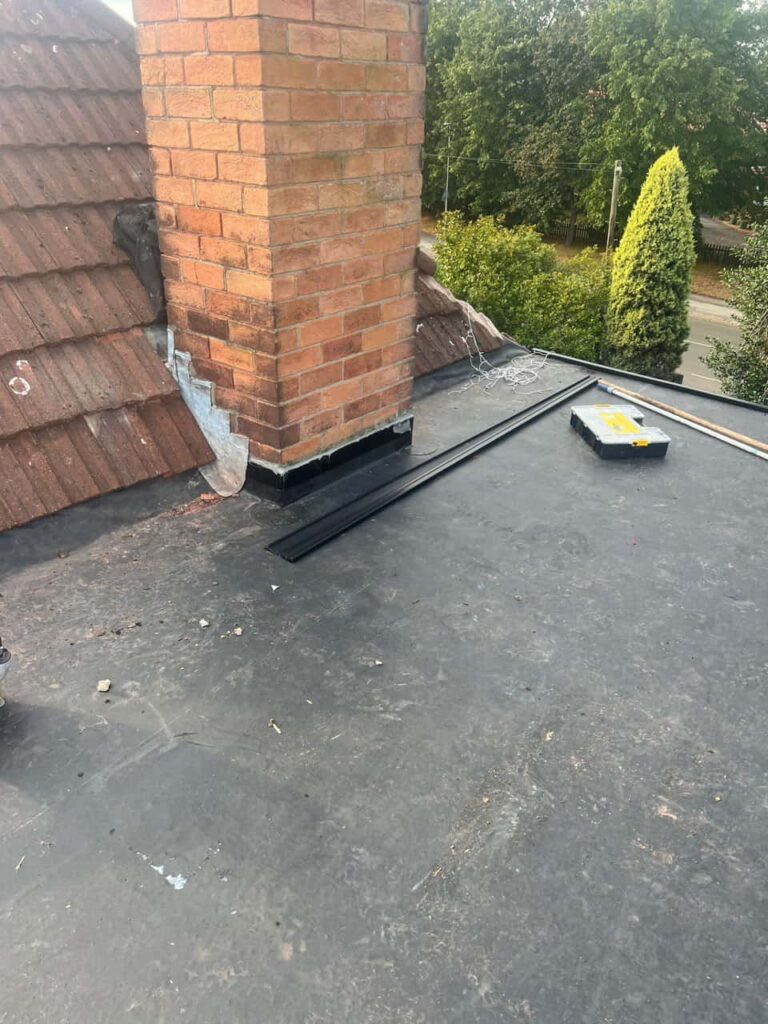Flat roofs are a popular and practical choice for extensions, garages, and commercial buildings, but they do require careful attention to ensure they remain watertight and durable. While modern materials and installation methods have improved their reliability, issues can still arise over time due to weather exposure, ageing, or poor maintenance. Before you call in a roofing specialist, there are a few checks you can safely carry out to understand the condition of your flat roof. Stourbridge Roofing Repairs helps homeowners and businesses across Stourbridge, West Midlands, assess and resolve flat roof concerns efficiently and professionally.
Understanding How Flat Roofs Differ
Unlike pitched roofs, flat roofs have only a slight gradient to allow for water runoff. This makes them more vulnerable to standing water and surface wear. Materials such as felt, rubber (EPDM), and fibreglass are commonly used to seal and protect flat roofs, but over time, they can become susceptible to cracking, blistering, or splitting due to UV exposure, movement, or age.
By inspecting your roof periodically, you can identify early warning signs before they lead to leaks or structural issues.
Step 1: Check for Ponding Water
The most common issue with flat roofs is standing or “ponding” water — pools that remain on the surface for more than 48 hours after rainfall. This typically happens when the roof’s drainage slope has become uneven or blocked.
Look for:
- Puddles of water that don’t drain away
- Staining or discolouration where water has evaporated
- Moss or algae growth, which thrive in damp conditions
Persistent ponding can weaken roofing materials and eventually lead to leaks. If you notice this, it’s best to have your roof assessed by a professional such as Stourbridge Roofing Repairs to ensure drainage and surface levels are restored correctly.
Step 2: Inspect the Roof Surface
Flat roofing materials can deteriorate gradually over time. Performing a visual inspection can reveal clear signs of wear.
Keep an eye out for:
- Cracks or splits in the surface material
- Blisters or bubbles where air or moisture has become trapped
- Loose or lifting edges near seams, joints, or flashings
- Discolouration or fading, which may indicate UV damage
If the roof surface feels soft or spongy when walked on, this may suggest trapped moisture or damage to the layers beneath. Avoid walking on it further and arrange a professional inspection to prevent worsening the problem.
Step 3: Examine Flashings and Seals
Flashings and seals are essential components that keep water from entering where the roof meets walls, vents, skylights, or chimneys. Over time, these areas can loosen or degrade due to movement and temperature changes.
When inspecting your flat roof, check for:
- Gaps or cracks around joints and corners
- Peeling sealant or lifting flashings
- Damp marks or staining on interior ceilings beneath those areas
A small issue with flashing can quickly lead to a larger leak, so early identification is key to avoiding extensive repairs.
Step 4: Look at the Drainage System
Flat roofs rely heavily on effective drainage. Blocked outlets or gutters can cause water to back up onto the surface, accelerating wear.
Inspect:
- Roof outlets or scuppers to ensure they are clear of debris
- Guttering and downpipes for blockages caused by leaves or moss
- Any signs of overflow after heavy rain
Keeping your roof drainage clear is one of the simplest yet most effective maintenance steps for extending its lifespan.
Step 5: Check Inside the Property
Flat roof issues don’t always start on the surface — sometimes the first signs appear indoors. After rainfall, take a look at ceilings and walls beneath your flat roof area for:
- Damp patches or yellow staining
- Peeling paint or bubbling plaster
- Mould growth, particularly in corners or near skylights
These can indicate minor leaks or condensation problems that need professional attention.
Step 6: Assess the Roof’s Age and History
If you know when your roof was last replaced or repaired, this information can help determine whether it’s nearing the end of its serviceable life. Older roofs are naturally more prone to wear and may require a more comprehensive inspection by a qualified roofer.
At Stourbridge Roofing Repairs, we often find that early maintenance or small-scale repairs can significantly prolong a roof’s lifespan, avoiding the need for full replacement.
When to Contact a Professional
If your checks reveal visible damage, pooling water, or signs of leakage, it’s important to contact an experienced roofing specialist for a full assessment. Attempting to fix or patch issues without professional knowledge can often lead to further problems, as flat roofing materials require precise application to remain watertight.
A skilled team like Stourbridge Roofing Repairs can identify the underlying causes of flat roof issues and recommend effective, long-lasting solutions. Whether your roof needs minor sealing work or a complete refurbishment, professional expertise ensures the repair is done right the first time.
Conclusion
Flat roofs offer a sleek and practical design, but they do need regular attention to stay in good condition. By checking for ponding water, inspecting flashings, cleaning drainage systems, and monitoring for interior dampness, homeowners can catch small problems early and avoid major damage.
Stourbridge Roofing Repairs provides expert inspection, maintenance, and repair services throughout Stourbridge, West Midlands. Our experienced team helps property owners keep their flat roofs watertight, durable, and performing at their best year after year.
Call us on: 01384 437 795
Click here to find out more about Stourbridge Roofing Repairs
Click here to complete our contact form and see how we can help with your roofing needs.

